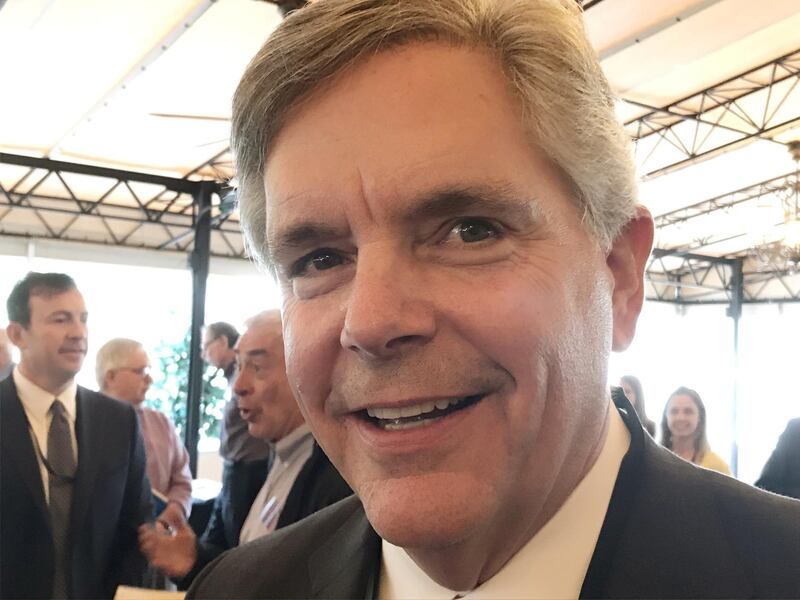General Electric’s attempts at a revival are starting to bear fruit - not necessarily in its cash flow, but in its culture and in the hearts and minds of shareholders who’ve had to slog with the industrial giant through some of the worst years in its history.
They are ready to believe again.
GE hosted its annual meeting on Wednesday in Tarrytown, New York. While past events have been held in GE facilities dedicated to up-and-coming technologies, this one took place in a Marriott ballroom. The mood was noticeably different, too: the hostility displayed at least year’s meeting toward then-CEO John Flannery was replaced by a more understanding tone for GE’s new leader, Larry Culp. Several investors made a point to thank him for his efforts even as they blasted the mistakes of the past, saving particular venom for Mr Flannery’s predecessor and long-time GE CEO Jeff Immelt.
Responding to a question about how GE could have fallen so hard and so fast, Mr Culp asked for patience to turn things around. “Not much, but just a little bit of patience – please,” he said.
Judging by the crowd at the meeting on Wednesday, investors just might give it to him.
Mr Culp reiterated expectations that GE will burn as much as $2 billion in cash this year across its industrial businesses and said the troubled power unit will take years to repair. Better than expected free cash flow in the first quarter was mostly a function of timing, and it remains unclear how GE will claw its way meaningfully above the $4.5bn watermark set in 2018 any time soon. But it feels like GE is slowly becoming a different company. That’s partly a reflection of the fact that Mr Culp is a true outsider and can better deflect attacks on the company’s past missteps than a GE lifer like Mr Flannery ever could. But it’s also a testament to how much he is clearly trying to put the company on more solid footing.
While investors grew tired of Mr Flannery’s frequent dumping of bad news and a perceived dilly-dallying on cost cuts and divestitures, Mr Culp has come across as a man of action during his seven months in the CEO seat.
Among his bigger achievements, he’s split the power business in two to speed operational improvements, while putting more cash in GE’s coffers by restructuring the sale of its transportation business to Wabtec, jump-starting the divestiture of its stake in the Baker Hughes energy business and agreeing to sell its biopharmaceutical operations to Danaher for $21.4bn.
One place of frustrating inconsistency is in GE’s efforts to improve its transparency and accountability. While it’s rejigged its board and vowed to shop around for a new auditor, the company also has doled out rich compensation packages and held on to convoluted earnings adjustments. But Wednesday's meeting felt like a heartfelt attempt by Mr Culp to listen and respond to shareholders concerns. He even got a few laughs, quipping at one point, when sounds of a baby’s cry pealed out from an attendee’s smartphone, “Hopefully a future GE shareholder.”
A “say-on-pay” proposal on executive compensation got support from just over 70 per cent of voting shareholders, down from 92 per cent the year prior, in what is likely a reflection in part of ISS and Glass Lewis’ opposition to the measure. ISS took issue with change-of-control provisions for the new general counsel as well as the amount of discretion the board has over bonuses.
Some have wondered whether Mr Culp’s compensation – which was 345 times that of its median employee last year – sends the right message at a time when the company is cutting costs and laying people off. But many are also cognisant of the fact that institutional shareholders won’t care what Mr Culp is paid if he can get the 150 per cent share price return that would earn him the high end of his package. A more optimistic tone doesn’t change the actual numbers, and renewed hope and faith will only take you so far.
But you also can’t have a turnaround without them.






